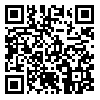BibTeX | RIS | EndNote | Medlars | ProCite | Reference Manager | RefWorks
Send citation to:
URL: http://jhsw.tums.ac.ir/article-1-5328-en.html
2- Assisstant Professor, HSE, Department Environmental Management, Zahedan Branch, Islamic Azad University, Zahedan, Iran ,
3- Assisstant Professor, culty of Environment, Tehran University, Tehran, Iran
Introduction: By industrialization, work-related accidents emerged as one of the most threatening factors of human life therefore analyzing the causes of accidents and providing control measures to prevent reoccurrence of similar accidents are of crucial importance.
Method and Materials: This is an analytical-descriptive study in which the collected data were analyzed using Ishikawa and SCAT methods and results related to the relationships between variables were examined. In this sense, first, accidents leading to amputations associated with operating with press machines (stuck between two objects) were analyzed by Ishikawa method and the obtained causes were classified into three groups: direct causes, interface causes, and root causes. Then, the obtained causes and the control measures were placed in SCAT table. The effect of causes of accidents and their ranking were determined using Chi-Square Test and Friedman's test, respectively. Accordingly, appropriate control measures were provided based on the accidents causes.
Results: The most significant interface causes is hurry at work the most significant root causes is inappropriate and ineffective supervision and the most important control measures is establishing effective HSE management system in the organization.
Conclusion: According to results, the main interfce causes of accidents leading to amputation due to operating with press machines is hurry at work because of increased production volume particularly by contractor companies. Furthermore, non-dynamic HSE system accompanied by ineffective supervision of personnel’s unsafe acts by the first layers of management are recognized as the basic causes of such accidents.
Received: 2015/12/9 | Accepted: 2015/12/9 | Published: 2015/12/9
| Rights and permissions | |
 |
This work is licensed under a Creative Commons Attribution-NonCommercial 4.0 International License. |





